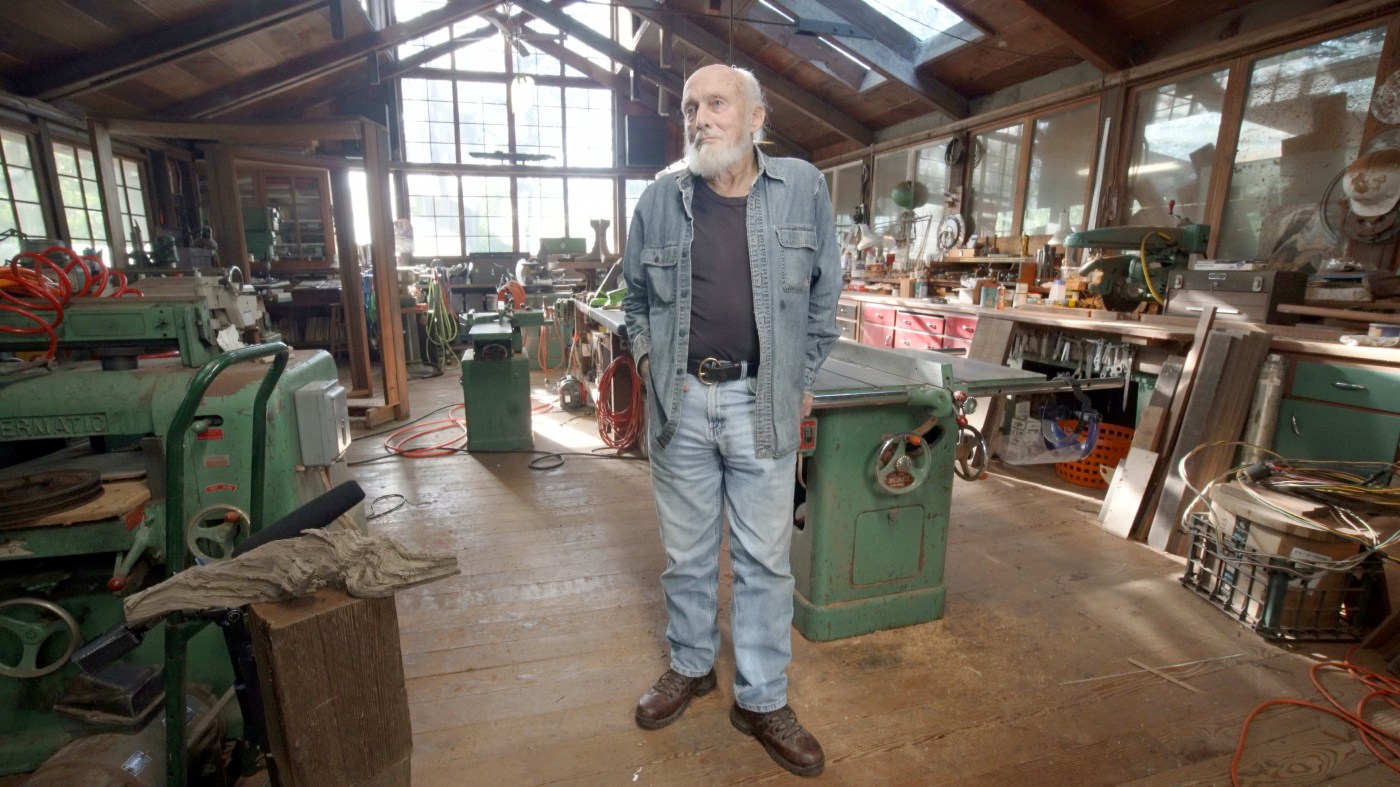My documentary, “Lost in Time: Druid Heights,” began as a tall tale between strangers on barstools.
That barstool meeting was five years ago in Friday Harbor on San Juan Island. I turned to see the grizzled face of Ed Stiles. A twinkle in his eye hinted at a good yarn. I was destined to fall down the rabbit hole.
Stiles didn’t mind revealing the shiny shards of his bohemian rhapsody in a barstool reverie. But he reared like a spooked stallion when he learned I worked in the documentary department at MSNBC in New York. Prickly, he didn’t want ghost-town raiders to turn his secret refuge, hidden deep in Muir Woods, into a counterculture Disneyland.
Stiles lives in Druid Heights. Now mostly a Muir Woods ghost town, it was once a counterculture haven. When the Pacific mist rolls in, it looks like the set of a fantasy movie.
It’s not on any map. But it’s the place, some argue, where hot tubs were invented and hedonistic parties ruled the nights. Early LSD experiments took place there, too. Yet it was also a place where Zen intellectuals and LGBTQ+ activists planted roots that grew into movements.
One founder, Roger Somers, was an accomplished saxophonist, rogue architect and larger-than-life hedonist. He jammed in Druid Heights with Dizzy Gillespie, Carlos Santana and other music legends. The Doobie Brothers and the Eagles played in the meadow.
The other founder, fearlessly sapphic writer Elsa Gidlow, published America’s first volume of openly lesbian love poetry.
It was a mecca for artists, writers, poets, filmmakers, media innovators, woodworkers, tinkerers and others, who inhabited cabins, sheds, campers and fantasy-inspired homes. Somers, a visionary builder, constructed what he called “wiggly wobbly” buildings at Druid Heights. While the members of Crosby, Stills, Nash and Young were becoming superstars, two of them found the artisans of Druid Heights. Somers designed an Art Nouveau, sexually charged touring bus for Neil Young. Stiles crafted inspired, organic furniture and music studio fixtures for Graham Nash.
Over three decades, starting in the late 1950s, Druid Heights was a chess board of rotating characters: the kings, queens and pawns of California counterculture — always moving, always changing.
Residents were central characters in Beat poetry, Zen philosophy, goddess worship, the Summer of Love, the San Francisco sound, Woodstock, sex worker rights, LGBTQ+ awareness and the equal rights movement. The “king of the Beats,” Pulitzer Prize-winning poet Gary Snyder, lived here in the Dragon House. He was the thinly disguised Japhy character in Jack Kerouac’s 1958 book, “The Dharma Bums.” Sex worker rights activist Margo St. James lived at Druid Heights with Somers when she created San Francisco’s infamous Hooker’s Ball.
But it took three years of writing letters to convince Stiles to open the pages of his story.
Past media stories focused on the “celebrity” resident Alan Watts, whose books, lectures and videos on Zen Buddhism — e.g., “The Way of Zen” — enthralled San Francisco and America as a whole. Watts lived between the Vallejo houseboat, shared with raconteur artist Jean Varda, in Sausalito and Druid Heights, where he had a library. He was a friend to the Beats, Timothy Leary and important Zen intellectuals.
But Stiles is the last man standing. When he dies, Druid Heights, its buildings and its history are in the hands of the National Park Service. The National Park Service acquired Druid Heights in 1977 by eminent domain. Residents without ownership were evicted. Houses were abandoned. Stiles, a landowner, was given a life estate.
Druid Heights is eligible for a listing in the National Register of Historic Places. But that may not save it from vanishing.
It currently sits at the end of an “off-limits” dirt road — a road that is frequently, and currently, washed out. Stiles, nimble in mind but not in body, must park on the treacherous dirt road and hike to his home.
“The failure of the (road) in last winter’s rain may well be the defining element, the ‘element in the closet,’ so to speak, that gives the National Park Service the excuse to just let Druid Heights go back to the earth. Everything there, my vehicles, workshop, lumber, house and personal effects, are essentially trapped on the ‘wrong side’ of the abyss, so they have become instantly valueless other than to future pilferers willing to drag some of it out down the trails to the valley below,” he told me.
Not many people experience a connection to “place” as much as Stiles has to Druid Heights. He lived in a counterculture whirlpool. It enthralled him, beguiled him and eventually broke his heart. But it didn’t break his blood-deep connection to his forest paradise.
“I sometimes feel like a coward for surrounding myself with peace and beauty, but have decided to live with my guilt, do the best I can to leave a small wake, and continue to paddle up ever smaller tributaries out of the mainstream, until, well, you know,” he told me.
Making a documentary is like climbing in a rockslide. You dodge and weave and adjust your footing as each interview reveals surprises, new characters, unforeseen events and new angles to explore. The Mill Valley Public Library became an essential resource. The beauty of the library and its redwood setting made it a remarkable work refuge. One of Stiles’ heroes, Bolinas furniture maker Art Carpenter, was commissioned to make the library’s furniture. The library’s oral history recordings of former Druid Heights and Mill Valley residents gave me context for the in-person interviews I conducted. I found that the weave of time, 30 years, interlaced with changing characters and events provided a complex view of Druid Heights. History is loaded with flawed memories, surprises and hidden explosives. So, it’s always a balancing act to put the puzzle together.
I see the Druid Heights story as a bohemian rhapsody. But it’s not a ghost town to me. It lives, a Shangri-La with colorful characters, ugly warts, wonderful “wobbles” and a magical wildness. Like music in your heart, in your head, it never stops. It lives.
“Three-fourths of philosophy and literature is the talk of people trying to convince themselves that they really like the cage they were tricked into entering.” ― Gary Snyder, former Druid Heights resident, Zen monk and Pulitzer Prize winner
• Details: “Lost in Time: Druid Heights” will be shown as part of the Mill Valley Film Festival at 1 p.m. Friday at the Lark Theater in Larkspur. While the screening is sold-out, tickets may be released at the door. For more information, go to mvff.com/program/lost-in-time-druid-heights.












